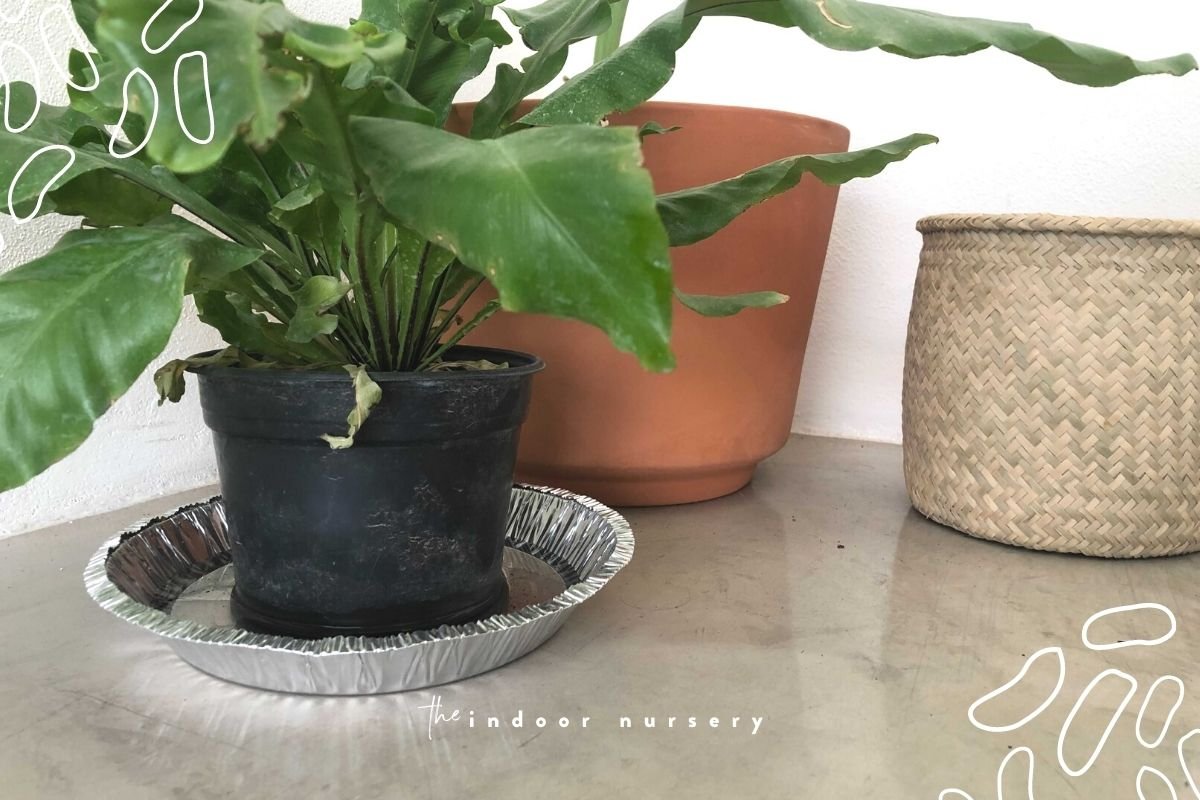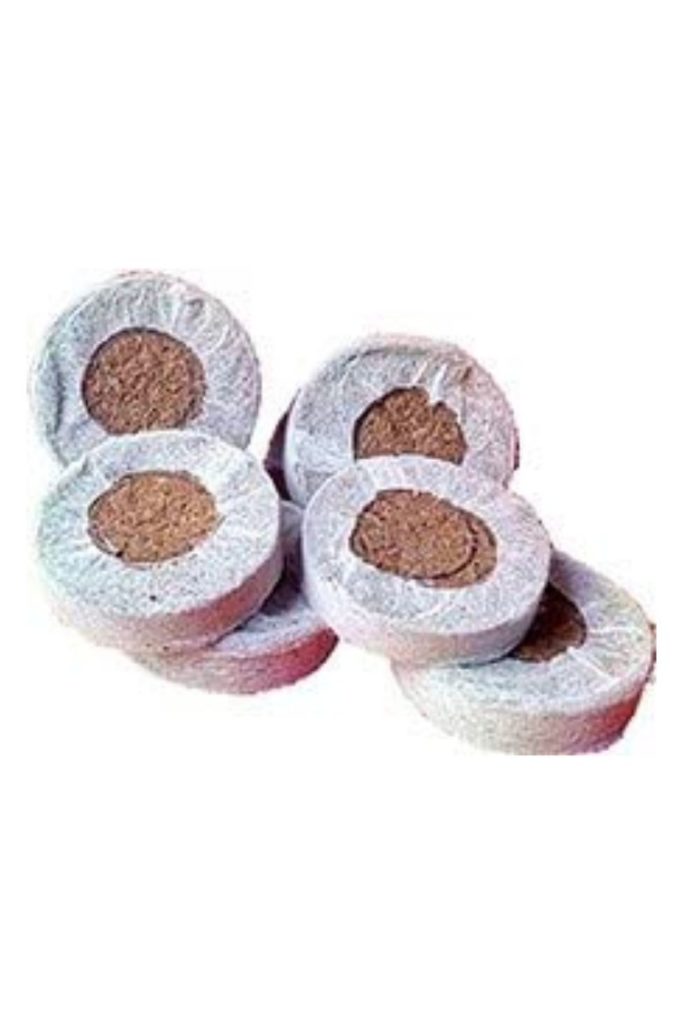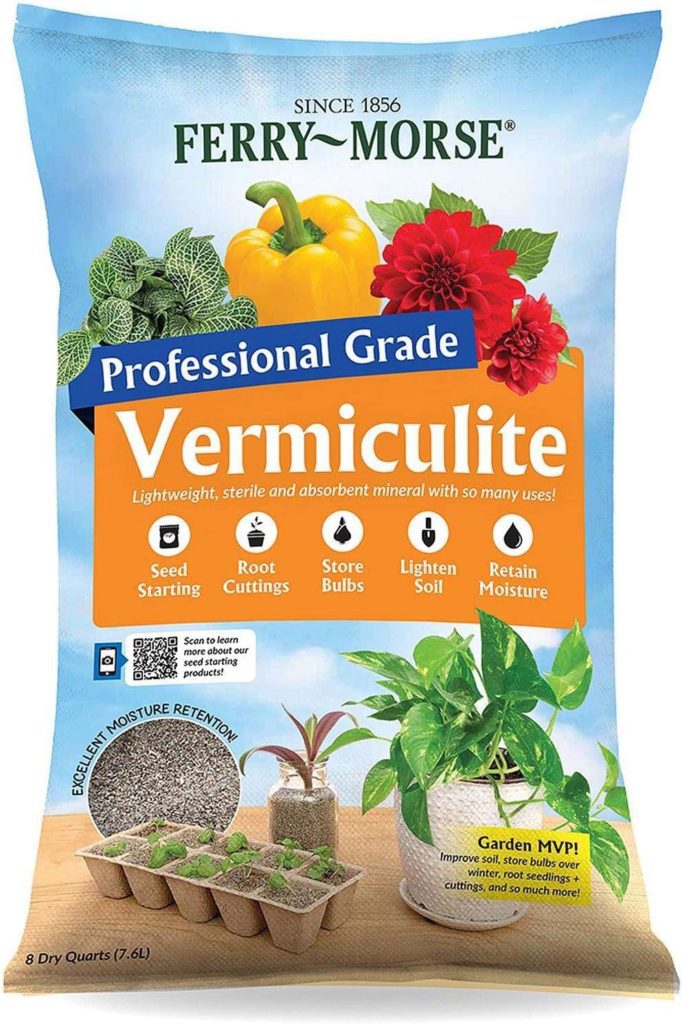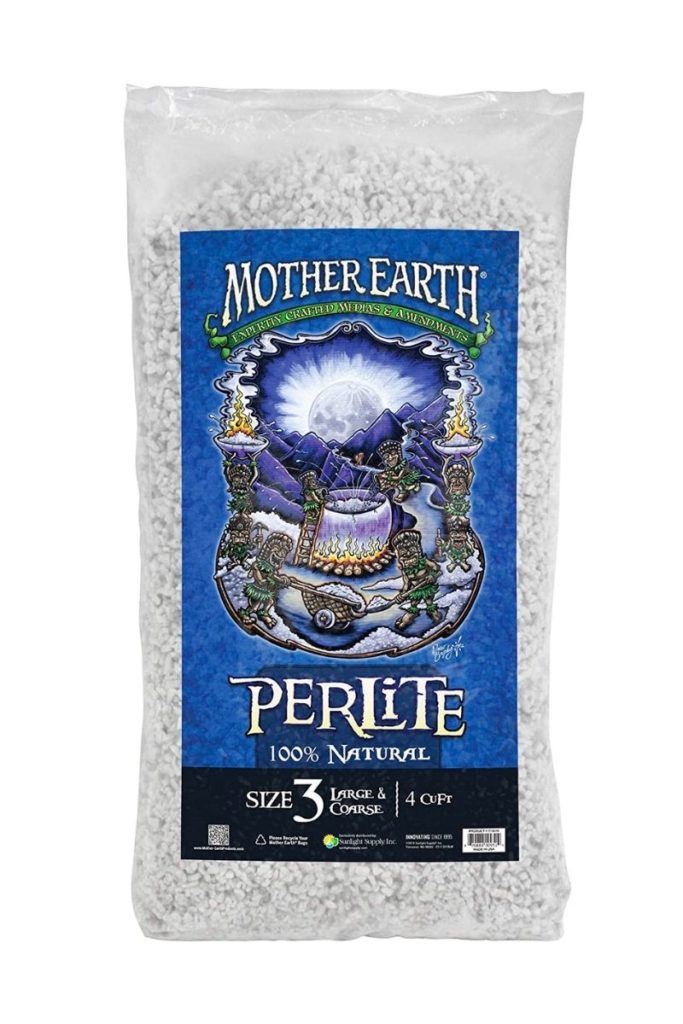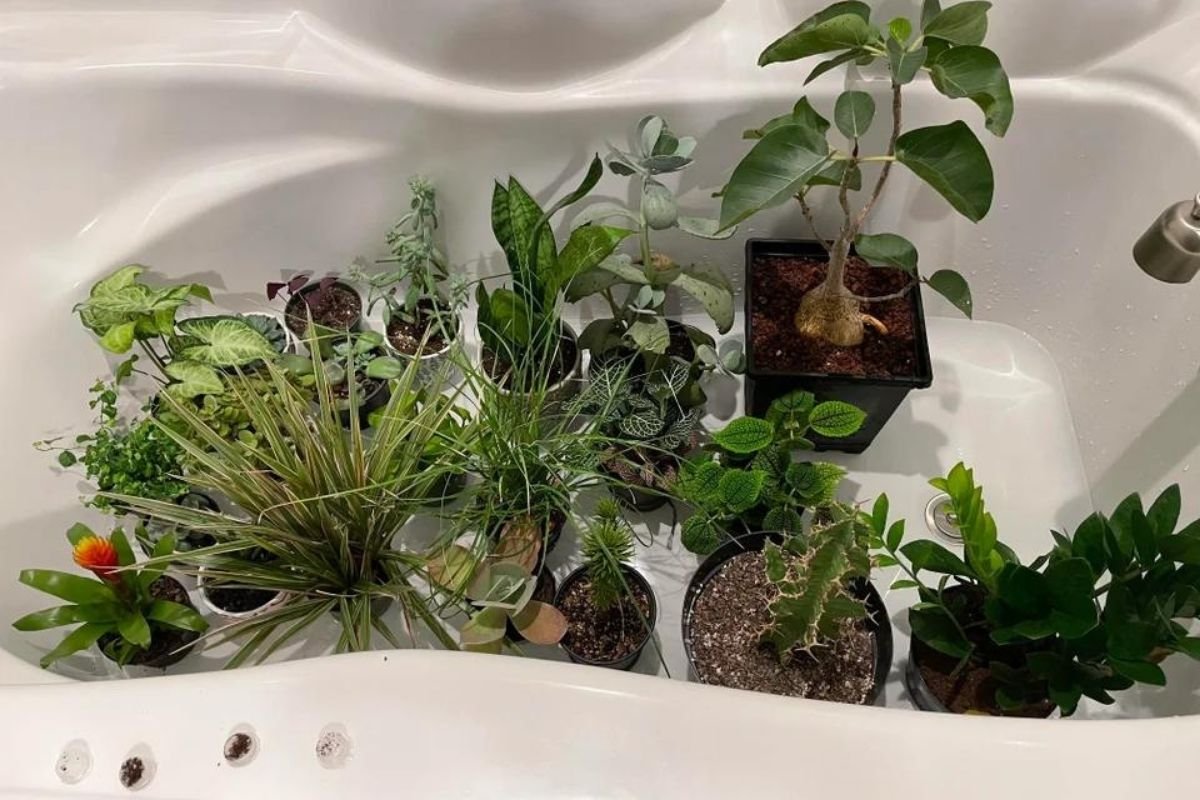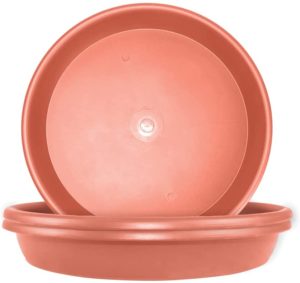What in the world are the benefits of watering plants from the bottom of the pot? And iPothoss it better than watering from the top?
Besides… how does that, like, work? We’ll answer all of your questions about bottom-watering in this article.
All plants need to survive is light, soil, fertilizer and water, but too much of any of these can lead to disease, horrible fungal infections like root rot, and ultimately, death 💀
Among basic plant needs, watering is probably the one area where well-meaning houseplant parents go wrong most often. And you know what? Bottom-watering is a super effective technique to prevent overwatering. We highly recommend this creative and practical technique for controlling your urge to submerge your plant in water whenever you pull out the watering can. Instead of pouring a ton of water on top of your plants, which can lead to drainage problems and overly moist soil, hydrate the roots first and let them carry water up to the plant. Brilliant, right?!
Bottom watering is also known as reverse watering, which makes sense intuitively but requires a bit of practice to perfect for houseplant newbies. Essentially, you just place your plant in a bowl of water and let the roots slowly drink up the liquid at their own pace. You will notice the water level go down over time.
Roots soak up the water from the drainage holes at the bottom of the pot, and voilà! Your plant is perfectly hydrated. And still alive!
bottom watering plants benefits
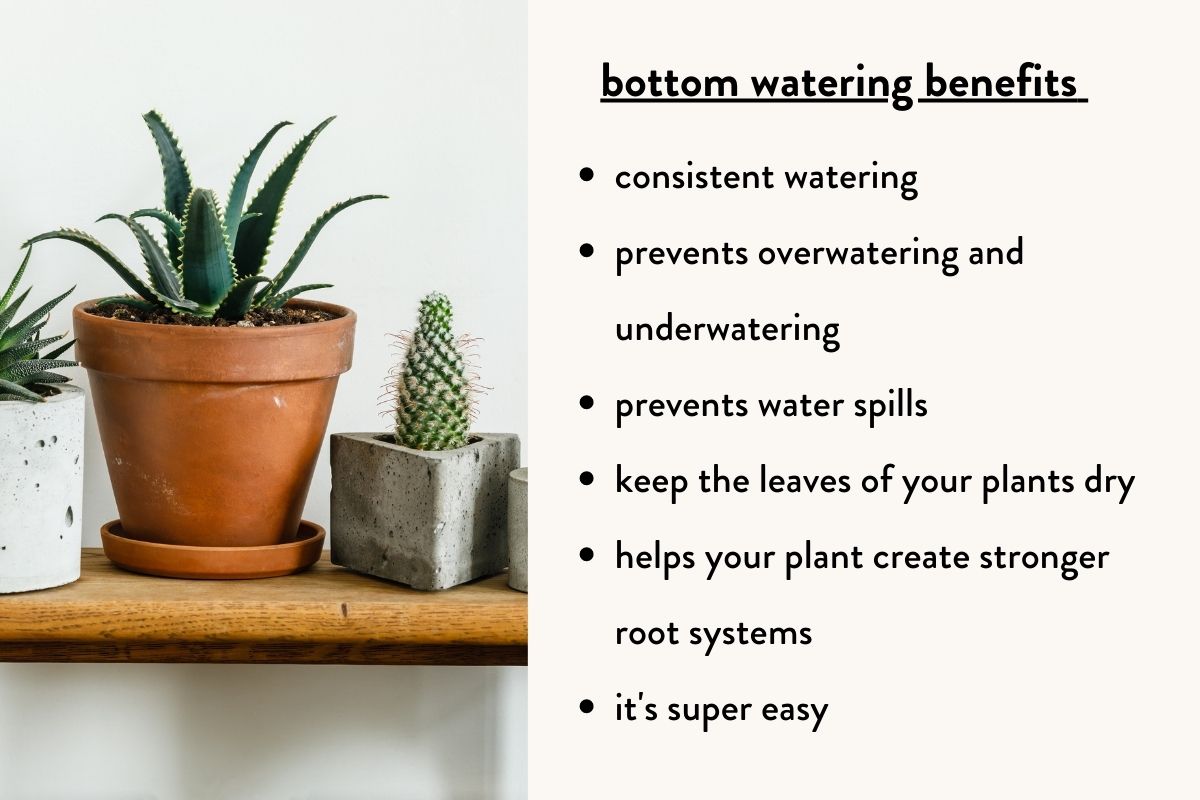
Why use this technique? Well, instead of spilling water all over your hardwood floors or overwatering your plants and essentially drowning them… you can save them and ensure their health by watering from the bottom instead of the top.
It is so much easier than watering from the top, because you don’t need to be cautious about accidentally watering the leaves or dealing with slow-draining soil. If your plant’s soil is super compacted though, change it out for a good, fresh potting soil for indoor plants that’s porous and well-draining before switching to this method for best results.
Bottom watering is also super beneficial for plants like African violets that HATE to get their leaves wet. It also encourages root development, which allows the roots to spread out within the potting soil and stay healthier. Another plus is that roots will be directly nourished, and you will not have any problems with your plants sitting in excess water which can happen when top watering. Here are a few other benefits of hydrating your plants from the bottom up:
- consistent watering. Instead of making a complex watering schedule that makes you feel guilty when you forget to water, all you need to do is fill the bowl the pot is sitting in with water and let the roots drink up the amount of water they need. You can actually see how much water you’re giving your plant, giving them exactly what they need every time.
- prevents overwatering and underwatering. Even experienced houseplant caregivers end up giving plants a bath when the actual goal was to hydrate them, eventually facing the consequences of fungal diseases like root rot. And hey, sometimes we also forget to water or go on vacation! Underwatering leads to dry leaves that get droopy or wilted and turn yellow over time.
- prevents water spills. Watering from the bottom helps protect your hardwood floors and plant shelves and bookcases by helping you prevent spills from runoff from your pot. Save yourself the expense and worry about damaging your furniture while watering your plants by bottom-watering.
- keep the leaves of your plants dry. There are just some plants (like African violets and snake plants) that do not like to get their foliage wet. Keeping the leaves of these plants dry can help prevent fungus and annoying pests like gnats.
- helps your plant create stronger root systems. Research shows it makes the root stronger and allows them to grow directly toward the moisture, instead of letting your plant sit in stagnant water.
- it’s super easy. You don’t need to be an expert to water your plants, nor do you need some special equipment. All you need is a saucer or container filled with water.
tips on how to bottom water your plants
The best way to bottom water your plants is to not overthink it. Rule #1. Throw out your watering schedule. When watering plants from the bottom, you actually just observe how your plant absorbs water over time. Pay attention to your plant and notice if the soil is still wet and moist by sticking your finger in the soil.
The beauty of this technique is that you don’t need to buy any new equipment (though watering globes will come in handy when you go out of town). It is only essential that the pots of the plants you plan to water have at least one drainage hole to seep up the moisture. Many gardeners place their potted plants in a deep tray, container, or even the bathtub – anything watertight that can hold a few inches of water.
I personally recommend the sit and soak method of bottom watering using a bathtub or big sink, which is great because you don’t have to worry about carrying a super heavy container full of water to each one of your plants, risking spills and kind of canceling the anti-spill benefits of bottom-watering.
This is how to bottom water plants with the sit and soak method:
- Rinse out your bathtub/sink.
- Stack all of your thirsty plants into the vessel, removing their trays.
- Fill the vessel with 2-3 inches of water.
- Let everything sit for 10-15 minutes. If all water has been absorbed in this time, add an inch more water to your vessel and let everything soak for another 10 minutes.
- Remove your plants from the tub. Place a drainage tray under each plant to catch excess moisture, and put them back into their favorite spot in your home.
- Enjoy your happy, hydrated plants!
Figuring out exactly how much water your plants need / how long to let them sit in their soak depends on the species of your plant and its growing conditions. What soil type do they like best— dry, slightly moist? You can always quickly check the soil to see how it’s doing. Another tip is to always use fresh or distilled water, as tap water often has too much chlorine which can damage your plant. And if you have tropical plants, ensure the water is not too cold or they will go in shock!
Lastly, just remember that over time bottom watering can cause minerals and salt deposits to accumulate over time at the top of the soil. To remove these mineral deposits, pour water on the top of the soil once a month and let the excess salts and minerals flush out on their own.
how long do bottom water plants
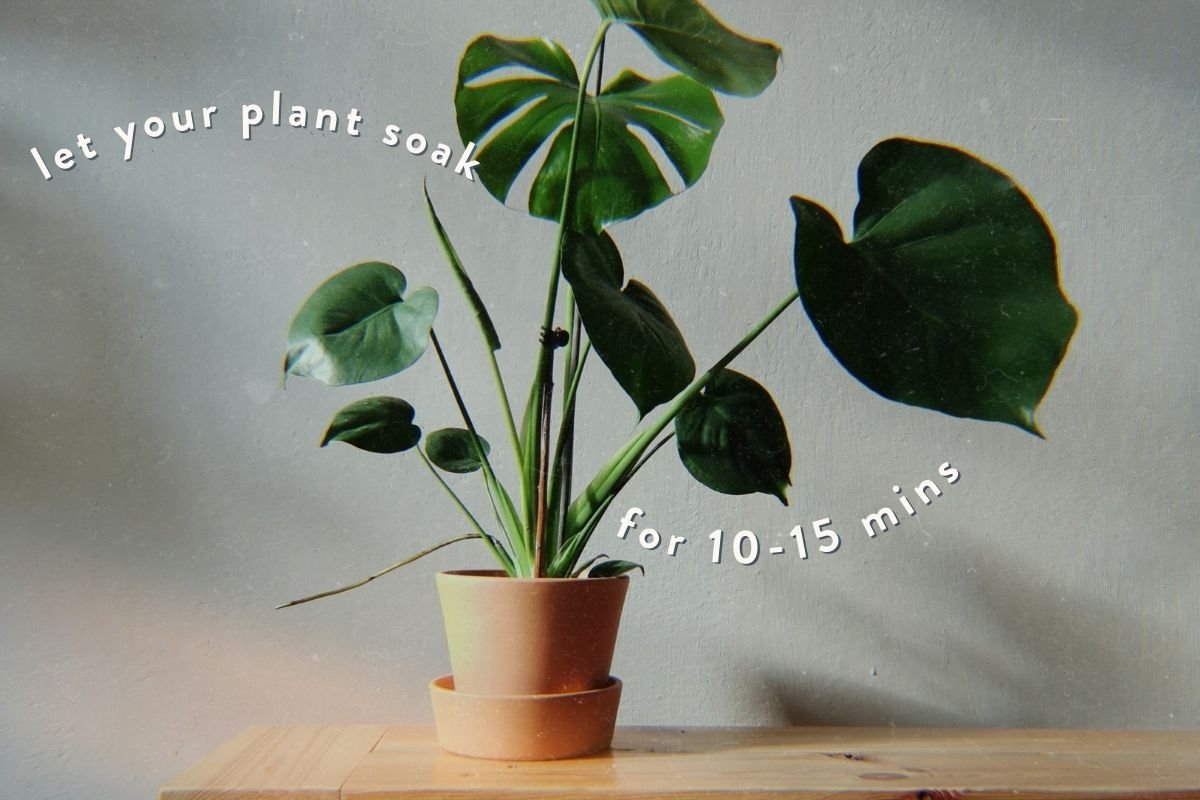
If you’re ready to give bottom watering a try, you may want to consider how long to let your plants sit in fresh water. Depending on the size of the potted plant, letting them sit for 10-15 minutes or so should be enough. The bottom holes in the pot will allow the water to simply soak into the soil. If you have large to medium sized plants, they may need a longer amount of time. Set a timer so you don’t accidentally leave them sitting in the water for hours; this can lead to root rot and fungal diseases and is completely opposite of the intention of bottom-watering!
When you get really good at bottom-watering, you’ll be able to know when your plants have quenched their thirst simply by weighing them in your hands before and after soaking. Water is heavy, and when plants are thirsty, they’ll actually weigh less. If water is completely absorbed after 10 minutes, you may want to give your plants a little extra liquid love.
which plants like bottom watering
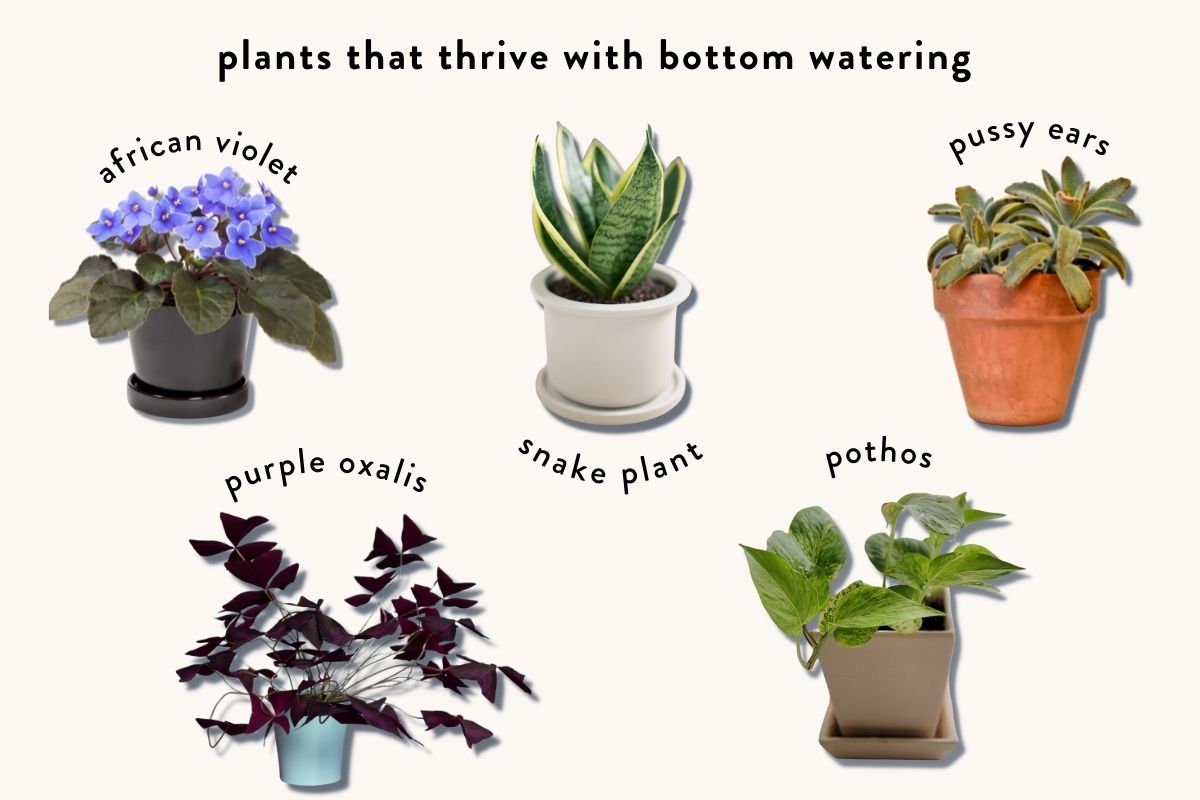
The houseplants below LOVE bottom watering! One thing they all have in common is that they really really don’t like to get their foliage wet and love to be in moist soil. If you constantly water any of these plants from the top, they can get spots on their leaves, so bottom-watering is the easiest solution to prevent wet leaves and unwanted spots. Almost all succulents dislike being overwatered, so bottling is the best technique for keeping them healthy and hydrated.
- African violets
- Snake plant (*tip for small snake plants: soak them in a tub of sink for a couple of minutes)
- Peace Lily
- Pussy Ears
- Jade Plant
- Pothos
- Philodendron
- Calathea
- Purple Oxalis
bottom watering plant pots
All you really need to bottom water plants is a container with a drainage hole in the bottom so it can soak up moisture. There are some pretty neat pots out there designed specifically for bottom watering, like this sweet option:
You can also find specific containers to place under individual pots that are made for bottom watering, if that’s your thing 😊 You want something that can hold several inches of water. Plastic is the best and cheapest material for bottom watering containers. It’s helpful to have a few extra plant trays to set your bottom-watered plants in while you transport them after watering.
Elly Décor Resistant and Self-Watering Pots
These terracotta coloured plastic pots will be a great solution for your overwatering problems! This pot is designed for watering plants from the bottom, so they can “self-water” and drink up when they need to. The magic of this pot is there is actually another plate where excess watered is store, in case your plants get a little thirsty.
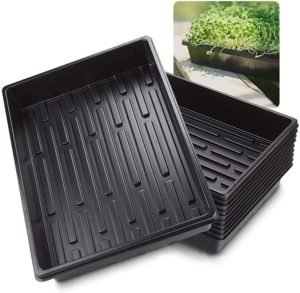
Plant Growing Seed-Starter Trays
This one is a super cost effective and durable tray, with no drainage holes–perfect for your bottom watering plants. It is completely re-usable and you will be able to use it for all your small houseplants.
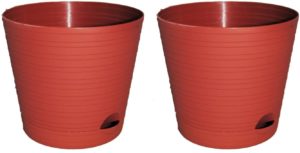
This set comes in two, so you can bottom-water to of your favorite houseplants at the same time! Both pots have an extra saucer to catch excess water and a pour spout to water from the bottom.
how often to water plants from the bottom
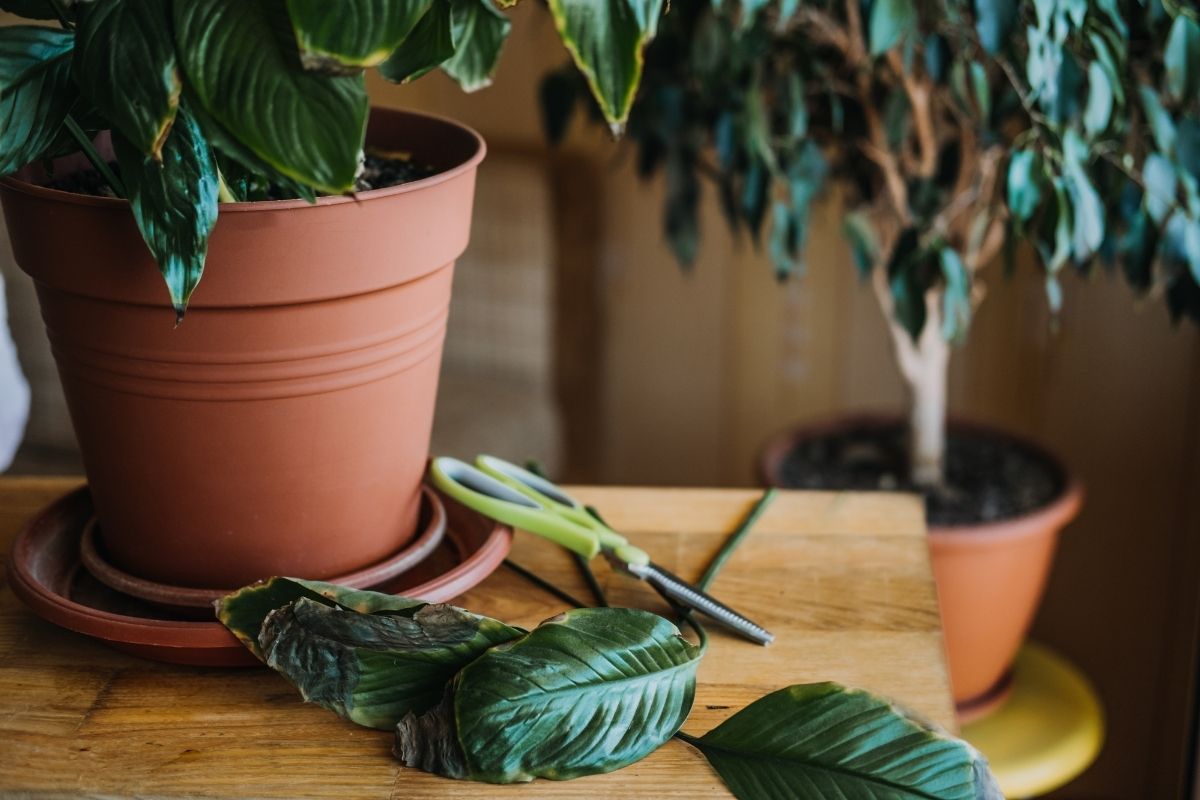
Depending on the type of house plant you have, expect to bottom-water a bit more frequently than you would when watering from the top.
If you bottled water every 3-4 days, you’ll give your plant enough time to absorb and distribute the moisture between waterings. There’s no set schedule for this, so just use your best judgment and stay attentive when bottom-watering. Check your plants once or twice a week to see how moist their soil is, and make their leaves look vibrant and healthy.
More about watering plants
- How Often To Water Dracaena (Including Snake Plants)
- How to Use Leca for Plants: Step-by-Step Guide with Pictures
- How To Save An Overwatered Snake Plant
- How Often To Water Pothos Plants (And When To Cut Back)
- How Often To Water Monstera Plants
- 11 Plants That Don’t Need Drainage And How To Care For Them
- Save Your Overwatered Monstera In 4 Steps (And How Not To Do It Again)

